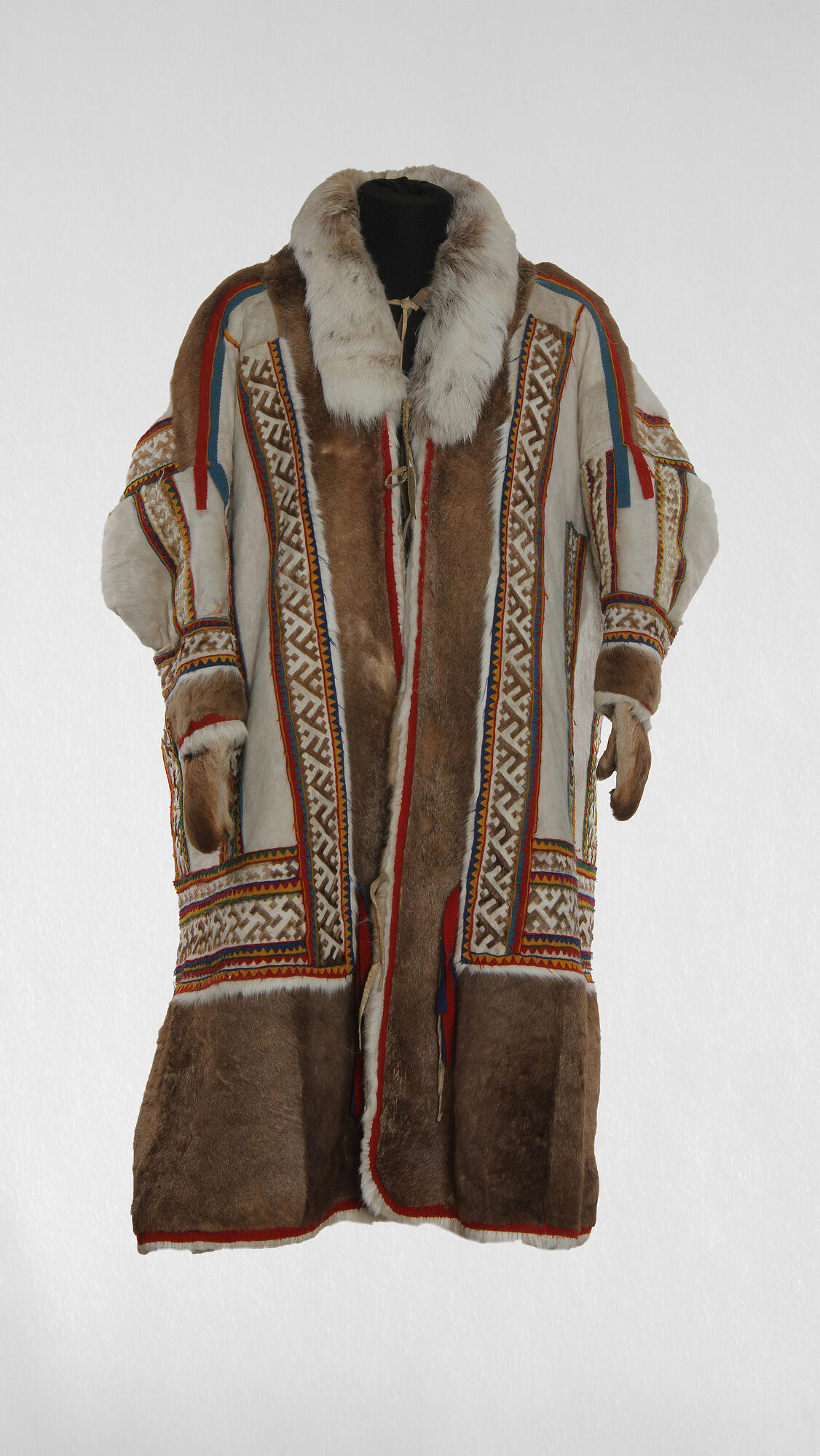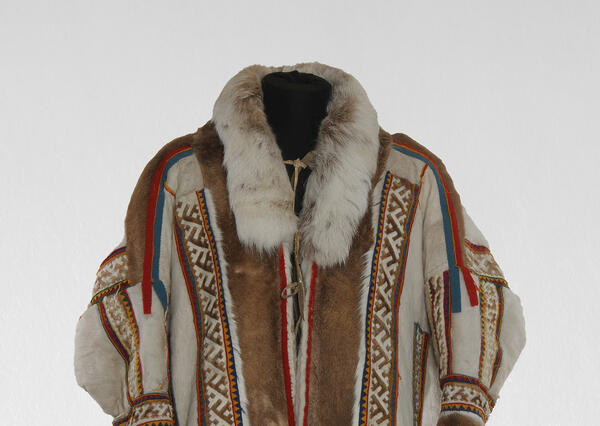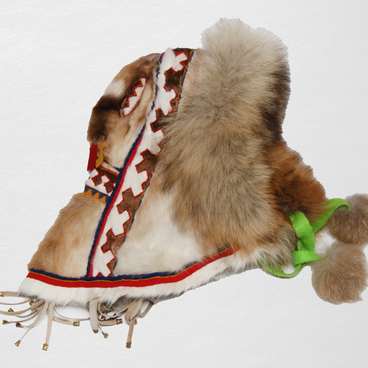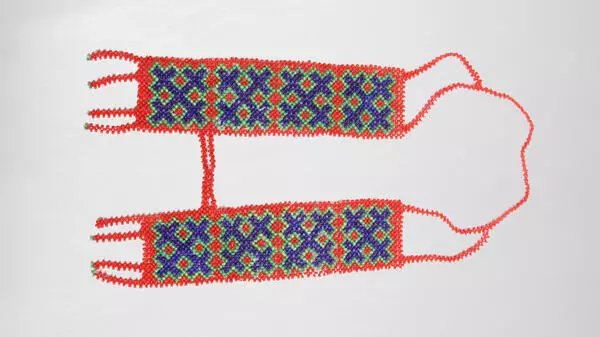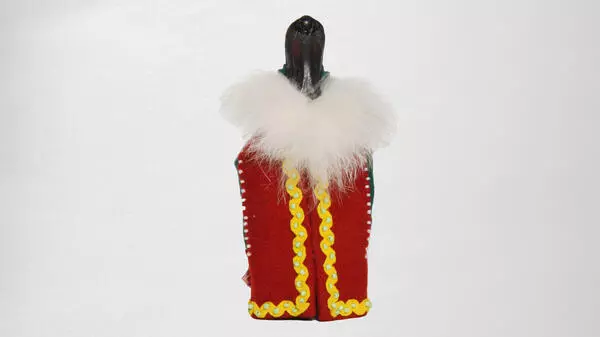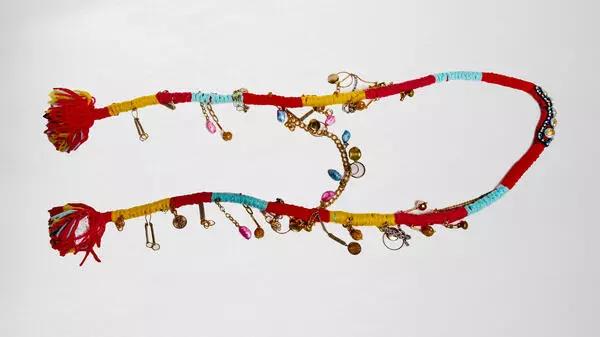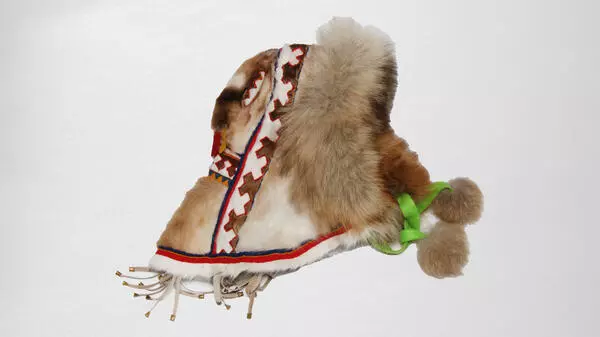In the North, a woman’s skill in sewing was determined, among other things, by the fur clothes she wore.
For example, in winter Nenets women wore a fur coat made of reindeer skins. It was called the yagushka and was an analogue of the men’s malitsa. Unlike the malitsa, the yagushka was fastened in front and lacked a hood.
The yagushka was sewn from the fur of a three-four-month-old deer. The skins were carefully selected according to the height and location of the pile, after which the parts were cut out and sewn together. The lining was also made of reindeer fur, but the hide of an older animal was used — four or five months old.
Paired rovduga straps were sewn to the sides of the fur coat at some distance from each other, which served as strings — about 14 pieces. They were tied from the inside.
The collar was more often sewn from the fur of a fox or sable, less often from deer fur. The most elegant were the yagushkas made of white reindeer fur with a wide dark edge — a “panda” — made of short-haired summer fur.
The main decoration of the yagushka was a traditional geometric pattern, which was located along the bodice, not reaching the bottom, and encircled the fur coat between the waist and a wide sewn-on strip at the hem. In addition, there were patterned vertical inserts in the seams on the sides and on the back. Cuffs and shoulder seams were also decorated.
The bottom patterns were complex and had many geometric elements. The width of the ornament was usually four to five centimeters.
One yagushka could be decorated with different motifs. For example, the hem was decorated with the traditional “antlers” pattern, which resembled a deer’s head decorated with antlers, “fox elbows” were placed on the bodice — stylized images of foxes legs bent in the way when the animal is running, “heads” on cuffs, a row of triangles with their tops down.
Since the fur coat did not have a hood, it was worn with a hat. Most often, the headdress was sewn in the color of the main clothing and decorated with traditional ornaments and metal pendants. If there was an opportunity, an imported bright cashmere scarf was tied on top.
The mittens were sewn to the sleeves from the back. So they could be quickly thrown off, but at the same time not lost in the cold.
When a Nenets woman had to be in the cold for a long time, for example, while riding on sleds in search of a new camp, she would tie her yagushka at the waist with a belt woven from thick wool or simple colored threads. The belt was adorned with a large metal round buckle.
For example, in winter Nenets women wore a fur coat made of reindeer skins. It was called the yagushka and was an analogue of the men’s malitsa. Unlike the malitsa, the yagushka was fastened in front and lacked a hood.
The yagushka was sewn from the fur of a three-four-month-old deer. The skins were carefully selected according to the height and location of the pile, after which the parts were cut out and sewn together. The lining was also made of reindeer fur, but the hide of an older animal was used — four or five months old.
Paired rovduga straps were sewn to the sides of the fur coat at some distance from each other, which served as strings — about 14 pieces. They were tied from the inside.
The collar was more often sewn from the fur of a fox or sable, less often from deer fur. The most elegant were the yagushkas made of white reindeer fur with a wide dark edge — a “panda” — made of short-haired summer fur.
The main decoration of the yagushka was a traditional geometric pattern, which was located along the bodice, not reaching the bottom, and encircled the fur coat between the waist and a wide sewn-on strip at the hem. In addition, there were patterned vertical inserts in the seams on the sides and on the back. Cuffs and shoulder seams were also decorated.
The bottom patterns were complex and had many geometric elements. The width of the ornament was usually four to five centimeters.
One yagushka could be decorated with different motifs. For example, the hem was decorated with the traditional “antlers” pattern, which resembled a deer’s head decorated with antlers, “fox elbows” were placed on the bodice — stylized images of foxes legs bent in the way when the animal is running, “heads” on cuffs, a row of triangles with their tops down.
Since the fur coat did not have a hood, it was worn with a hat. Most often, the headdress was sewn in the color of the main clothing and decorated with traditional ornaments and metal pendants. If there was an opportunity, an imported bright cashmere scarf was tied on top.
The mittens were sewn to the sleeves from the back. So they could be quickly thrown off, but at the same time not lost in the cold.
When a Nenets woman had to be in the cold for a long time, for example, while riding on sleds in search of a new camp, she would tie her yagushka at the waist with a belt woven from thick wool or simple colored threads. The belt was adorned with a large metal round buckle.
